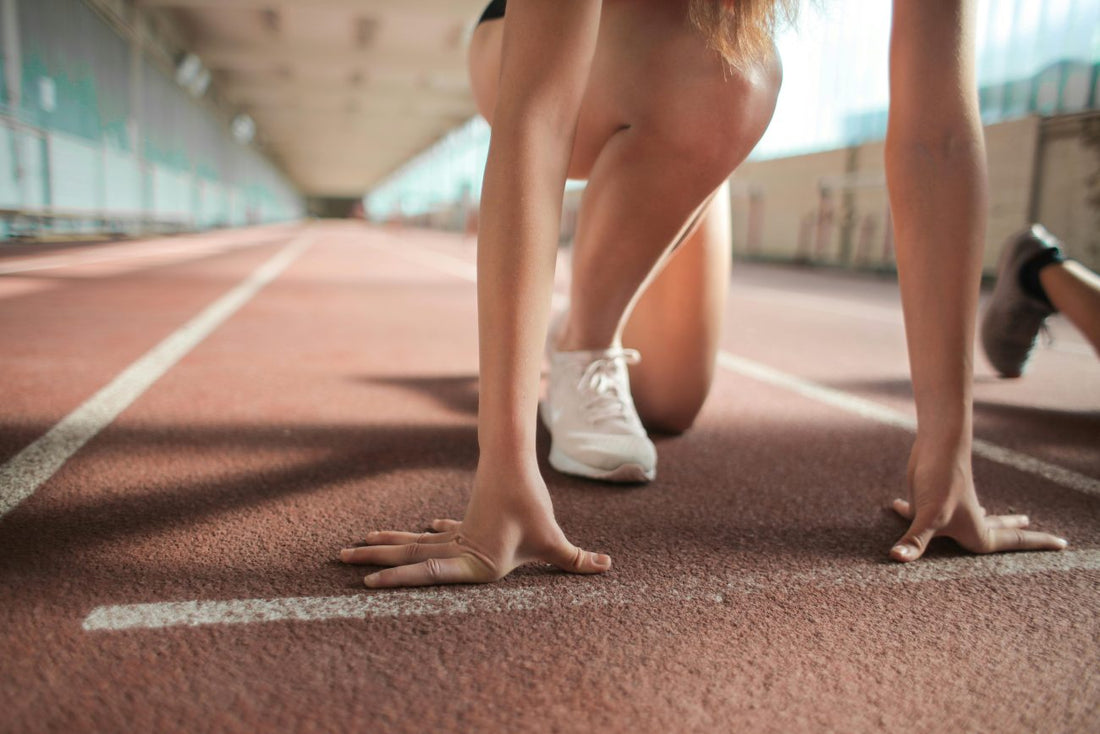I have an upfront confession to make, I am a BOY dad! I have not had to manage a female athlete within my personal family niche. Nevertheless, during my clinical practice days I encountered many parents of young female athletes who were concerned about some irregularities noted on their teen athlete. I did my professional best to provide some comfort and reassurance given the physiological processes involved in such a young population, but I felt as though I was the wrong gender to be dishing out the advice. I totally get it. Their daughter's passion and performance for her chosen sport was their upmost concern. But how do we ensure these young women’s dedication fuels their success without compromising their well-being? Let's talk about the important connection between training and hormonal health in teenage female athletes.
Understanding the Connection: Training and Hormonal Health
We admire the commitment and drive of young female athletes. However, it's essential to understand how intense training can affect their hormonal balance, especially during adolescence. The goal is to create a supportive environment where they can thrive in their sport while maintaining optimal health.
The Importance of Energy Balance: Fueling for Performance and Growth
Teenage athletes have increased energy needs due to growth and training. One key issue is the occurrence of something called LEA (Low Energy Availability) (1). LEA occurs when an athlete doesn't consume enough calories to support both their training and basic bodily functions. Ensuring they consume enough calories to support both is crucial. In teenage athletes, this can disrupt the delicate hormonal balance needed for puberty and menstrual cycle regulation. LEA can lead to:
- Menstrual irregularities
- Delayed puberty
- Impaired bone health
Menstrual dysfunction is also an important concern for pubertal teens (2). Endurance sports can put significant stress on the body, leading to hormonal imbalances that affect the menstrual cycle (3). This can result in:
- Irregular periods
- Absent periods
- Increased risk of stress fractures due to decreased estrogen levels
Beyond the Basics: Nutrition and Overall Well-being
Nutritional Deficiencies is another area of concern for teenage athletes. It's not just about calories. Adequate nutrition plays a vital role in supporting hormonal health. Common deficiencies include:
- Iron: Crucial for oxygen transport and energy production
- Calcium and Vitamin D: Essential for bone health (4)
- Inadequate intake of macronutrients: Carbohydrates, protein, and fats
Iron, calcium, and vitamin D are essential for overall well-being and performance. A balanced diet, tailored to their individual needs, helps them feel strong and energized since these deficiencies can exacerbate hormonal imbalances (5).
Creating a Supportive Environment: Open Communication and Collaboration
Last, but not least, is the importance of the psychological factors involved within sports competition (7). The pressure for a competition or self-assessment may heighten the pressure to maintain a certain body weight or composition which can lead to erratic eating behaviors. This can be a double-edged sword as the stress of competition can affect both hormone levels, further increasing hormonal disruptions, and LEA (6). Open communication between athletes, coaches, and parents is key. Encourage your daughter to share any concerns about her health or well-being. Collaboration with healthcare professionals and registered dietitians can provide valuable guidance and support.
Promoting Healthy Habits: Finding the Right Balance
As you can see, this is a multifactorial problem needing a multifactorial solution. This is about finding a healthy balance between training, nutrition, and rest. We must try to emphasize the importance of listening to their bodies and prioritizing self-care while simultaneously encouraging them to focus on performance optimization through proper fueling and recovery, rather than solely focusing on weight or body composition.
Building a Foundation for Long-Term Health and Success

By understanding the connection between training and hormonal health, we can empower teenage female athletes to pursue their dreams while maintaining their well-being. This is about ensuring they have the energy to perform at their best, both in their sport and in their daily lives. Let's create a supportive environment that prioritizes their health, allowing them to reach their full potential, both on and off the field. I would highly encourage you to consult with a medical professional, pediatrician or OBGYN if you have concerns regarding any of the patterns previously mentioned.
For further information and a deeper dive into the female athlete needs please read the article by Susan Kitchen, “The Female Endurance Athlete’s Guide to Eating for Hormone Health”. Ms. Kitchen is a pro level endurance athlete and USAT Triathlon Coach.
Remember, more is not always better, better is always better! Like us on Facebook and Instagram. Become part of the ACTOS community and visit: myactos.com for further tips and resources.
Gaspar
ACTOS, Performance Innovation
*Dr. Gaspar A. Rosario is a seasoned healthcare expert with a Doctorate in Health Sciences and over a decade of clinical experience. His certifications in Weight Management, Performance Enhancement, and Exercise Therapy from the ISSA, coupled with his diverse medical background, position him as a trusted authority in the field.
References:
- Wasserfurth, Paulina, et al. "Reasons for and consequences of low energy availability in female and male athletes: social environment, adaptations, and prevention." Sports medicine-open 6.1 (2020): 44.
- Ihalainen, Johanna K., et al. "Beyond Menstrual Dysfunction: Does Altered Endocrine Function Caused by Problematic Low Energy Availability Impair Health and Sports Performance in Female Athletes?" Sports Medicine 54.9 (2024): 2267-2289.
- Passoni, Paolo, et al. "Association between physical activity and menstrual cycle disorders in young athletes." International Journal of Sports Medicine 45.07 (2024): 543-548.
- Ikegami, Nodoka, et al. "The influence of low energy availability on bone mineral density and trabecular bone microarchitecture of pubescent female athletes: a preliminary study." International Journal of Environmental Research and Public Health 19.9 (2022): 5580.
- Hormonal Imbalance Symptoms Female Athletes Don't Want To Ignore. https://stories.strava.com/articles/hormonal-imbalance-symptoms-female-athletes-dont-want-to-ignore#:~:text=It's%20important%20for%20active%20women,cause%20your%20hormone%20levels%20to
- Overtraining and the endocrine system. Can hormones indicate overtraining? https://www.endocrinology.org/endocrinologist/153-autumn-24/features/overtraining-and-the-endocrine-system-can-hormones-indicate-overtraining/#:~:text=performance%20and%20health.-,The%20hormonal%20changes%20associated%20with%20overtraining%2C%20including%20blunted%20cortisol%20and,exercise%20stress%20tests%2C%20highlight%20the
- Magee, Meghan K., et al. "Body composition, energy availability, risk of eating disorder, and sport nutrition knowledge in young athletes." Nutrients 15.6 (2023): 1502.

